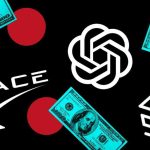This year, skinny jeans were declared over. So were side parts and laugh-cry emojis. Young content creators were invited to the Met Gala to sit side-by-side with some of fashion’s biggest names. Sorority hopefuls in Alabama made the Pants Store a nationally recognized brand. Y2K became fashion’s top trend. And all of this happened because of one app: TikTok. We’re used to thinking of Instagram and Pinterest as fashion’s premiere social media platforms, but, in 2021, TikTok revitalized the way we talk about fashion both online and IRL.
While TikTok’s first boom happened in 2020 — think Amazon’s butt-lifting leggings craze — this year we looked to the app for more than laughs and viral hacks. Instead, the app’s one billion monthly users (yes, you read that right!) built and consumed relatable fashion-focused content far from the curated feeds we’ve gotten used to, discussing the emergence of subversive basics in one swipe up and sharing cottagecore inspiration in the next. It marks yet another wave of fashion democratization that’s birthed from the bedrooms of the fashion-obsessed to the streets and runways.
That relatability is part of TikTok’s appeal, according to Vanessa Craft, head of content partnerships at TikTok. “TikTok offers an unfiltered and authentic approach to fashion,” she says. “I view other platforms as places to share a highlight reel of your life, whereas TikTok is where people go to be themselves and to find a community of other people like them.”
This community — as well as the wide range of formats on the app, from challenges to sound trends — has allowed fashion creators and brands to rethink the old influencer model. Content creation is no longer about showing a cult of stylish personality — think: street style-based influencers who created a following on what they wore and promoted — but rather fostering a community for discourse, experimentation, and yes, criticism that not even a luxury brand like Chanel is safe from.
@thealgorythm The layering opportunities ✨ how would you style this? Top by @clarissa.larrazabal #fashiontrendpredictions #trendtok ♬ Caution – Kaytranada
It’s also about understanding that fashion really isn’t that serious. Take, for example, creators like Agustina Panzoni (@thealgorythm), Alexandra Hildredth (@guyfieri.superfan), Mandy Lee (@oldloserinbrooklyn), and Benji Park (@fashionboy) who’ve created a community of trend forecasters, critics, and fans that has little to do with showcasing their personal style, but rather what they have to say about fashion.
Much like Diet Prada and other Instagram-based fashion police-type accounts, their on-app discourse has influenced the fashion industry. Panzoni coined the term subversive basics, Lee predicted the comeback of the Indie Sleaze aesthetic, Hildredth has cemented her expertise in show reviews and industry criticism, and Park launched an education series called “Fashion School” to teach his followers about the industry without spending a dime on tuition.
Furthermore, this new wave of TikTok influencers is not afraid to call out brands, mainly because they’re not interested in following the traditional model of fawning influencer marketing. Hildredth, for example, has called out brands like Skims for its collaboration with Fendi and Tiffany for its Gen Z-focused campaign, while Park has strongly expressed his feelings against supporting Dolce & Gabbana because of past allegations of racism and sexism. Some are also using it as an online resume of sorts, using the app to promote their skills: “Influencer marketing is so saturated that at this point we are using this as a platform to push ourselves professionally,” says Panzoni, who landed a job as a category manager of womenswear at Depop since going viral on TikTok.
Still, fashion brands have found a way to make TikTok work for them; it’s the latest marketing frontier for companies to bet on. Big name brands like Kendra Scott and small boutiques like Alabama’s Pants Store have found that one viral moment can become the organic campaign of their dreams. This past summer, both of these brands witnessed firsthand the IRL success of the #BamaRush phenomenon, in which sorority hopefuls at the University of Alabama started sharing their rush week outfits on the app. Kendra Scott saw a 15% increase in new website users from women between 18 and 24. The brand also smartly capitalized on the moment by creating its own content through a “Choose Your Own Sorority Character” video on TikTok and a personal video message from Kendra Scott herself. For Pants Store, the success was even bigger: Sales across its five boutiques and the online store surged by 400% during that week, according to owner Michael Gee.
@barbarakristoffersen fits
Beyond #BamaRush, brands like Gap, Aerie, Skims, With Jéan, and Lirika Matoshi have also reaped the benefits of TikTok’s algorithm. After creators use their products — mostly bought on their own — on the app, their viral videos translate into IRL dollars. And sometimes, it requires brands to move fast. Take, for example, Gap’s logo hoodie, which was not even available when creator Barbara Kristoffersen posted a video wearing it. Not long after, Gap noticed such demand for the piece that it launched its Gap Hoodie Color Comeback, which has since sold out. Skims’ long slip dress also went viral on the app this year, prompting a wait list of over 40,000 people. And then there are Aerie’s crossover leggings, which became popular in November 2020 after creator Hannah Schlenker posted a video wearing them. Right after, the brand’s website saw an increase of 700,000 searches for the leggings, as well as a surge of 200,000% in Google searches, according to Insider.
Even the secondhand market is seeing a boom propelled by TikTok. The RealReal, for example, has seen an increased interest in Gucci and Louis Vuitton from Gen Z consumers, with the Gucci “Jackie” and the Louis Vuitton “Pochette” bags leading in sales. Meanwhile, a new set of luxury watch connoisseurs on TikTok has also prompted a surge in searches and sales of secondhand luxury watches.
Notably, while brands respond to public interest, it’s the creators who are leading the trends, a departure from the previous top-to-bottom approach the industry once upheld. “The greatest value TikTok creators can provide for fashion and luxury brands is the ability to reinvent what fashion means to their audience through a more entertaining and authentic creative lens,” says Craft.
@arielleismynam3 #nyc #y2k ♬ competition. azealia banks – hannah e
As TikTok has positioned itself as the premiere Gen Z app, the content and trends that do well on the platform tend to align with this generation’s values and interests, especially when it comes to ’90s and early 2000s nostalgia, as well as thrifting and vintage shopping. Many Gen Z users have found themselves adoring low-rise jeans, Britney Spears’ Y2K style, and Tom Ford’s Gucci era, Juicy Couture tracksuits, and Ed Hardy trucker hats on TikTok. The #Y2K has generated 3.5 billion views and #Y2KAesthetic has more than 406 million views, with brands like I.am.Gia, JW Pei, Miaou, and Blumarine translating the Y2K nostalgia to the runway and retail.
While fashion trends are of course cyclical, there’s also a deep cultural element that propels many of these comebacks. These time around, WGSN youth strategist Marian Park credits it to Gen Z’s “nostalgia for both the youth culture and youth fashion from the early 2000s,” as well as “current conversations around the metaverse and the impact of digital fashion” that she says are similar to the discussions around the Y2K scare and the unbounded promise of the internet in the early 2000s. With TikTok’s accelerated growth, it’s safe to say that everyone is looking at the precipice of a new age in tech, just like we were at the turn of the 21st century.
It’s become clear that whatever fashion creators do on TikTok can quickly translate into real-life sales and impact. But, as writer Amy Odell noted in her newsletter Back Row, “fashion people are quickly migrating [to TikTok] because they have realized they can find a much bigger and more engaged audience.” In this digital tug of war, TikTok has emerged as 2021’s biggest fashion influencer. But will it hold on in 2022?
Like what you see? How about some more R29 goodness, right here?
How Does A Fashion Brand Go Viral On TikTok?
Powered by WPeMatico





